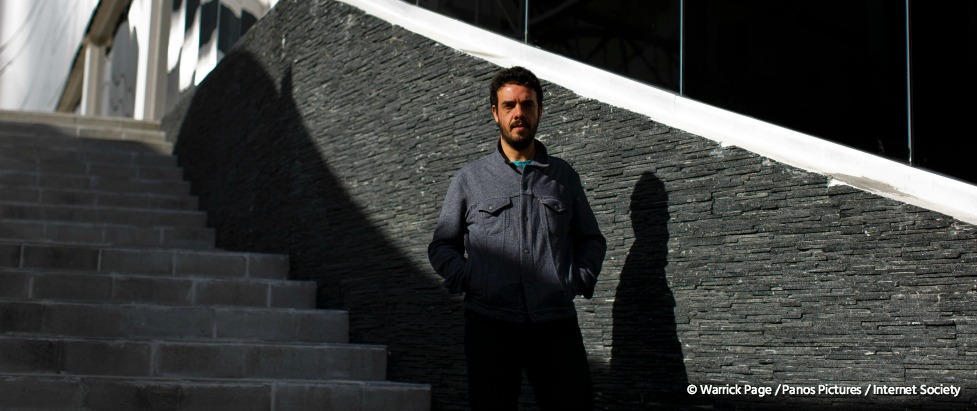When I first moved to Mexico, I started working with a really cool organization called Palabra Radio, which is a community radio organization here in Oaxaca. I was really impressed with how communities were operating, owning, and sort of dealing with everything that comes with operating their own low power FM radio station. That gave me the idea to try and do something similar with mobile communication, which is how Rhizomatica came about.
Before coming to Mexico, I’d been working in Nigeria, where I’d done some work on small scale, DIY rural mobile networks. What we wanted to do here is that, but on a larger scale, so to make a system that was replicable and relatively easy for communities to set up.
We got our first network up and running in March of 2013, but it took a lot to make that happen. We put up the first network, but that was sort of a test; can we do this? Will the community actually like it once it’s up? But we got really good feedback from people, and then more and more communities kept asking us to do help them do a similar thing. Communities get in touch with us, we go through a bit of a diagnostic with them: do you have the money? Do you have the capacity? Do you have support from the whole community? And if we see that all that is in place, we move forward with them. In the last three-and-a-half years, we’ve helped 19 communities set up networks.
Communities now have the technological means, have the legal pathway to set up their own Global System for Mobile Communications (GSM) networks, as well as a set of different organizational models for how the networks can be run. So, with our help, they set up their own base station, which gives signal to the community and connects to other equipment that we help provide to them, but that they pay for and own. We help out by providing some ongoing technical support, legal support and so on. But the community then has their own little network, which can cover about 500 users before it starts getting saturated, at which point we can install more equipment. They run the service themselves, and it costs about two or three dollars a month per user.
The networks we’ve helped set up have made a huge difference for people in these communities. It lowers the cost of communications tremendously, so you’ll see savings of close 98 percent over other options. Something that cost a dollar a minute now costs one or two cents per minute. That changes how much and how often people communicate. It also makes things easier, having a mobile phone as opposed to having to walk to a payphone somewhere. It costs less and you can do it more. It also changes how people do business, it makes it easier for people to buy and sell things. It makes emergency services easier for people to access. These are mostly agricultural communities, so if someone has an accident in the fields, they can call for help.
We’re trying to build off this success in a couple ways. One is we’re starting to look at building hybrid networks, so networks that can handle both telephony and Internet. That way people can start doing VOiP calling and things like that. That’s still a few months away. The other thing we’re doing is looking at ways we can export this project. We’re looking at opportunities in Columbia, in Brazil, in Nicaragua, in Botswana, countries that have organizations that are trying to do similar things to what we’re doing here. If things have to get modified a bit, that’s fine too. But we have the experience and expertise and willingness to help those places get going and build their own local infrastructure organizations.
There’s a lot of activism around the Internet, but there’s very little activism around telecommunications networks and telephony, and what there is very localized, but when you make telephony available to people it can make a tremendous impact.
